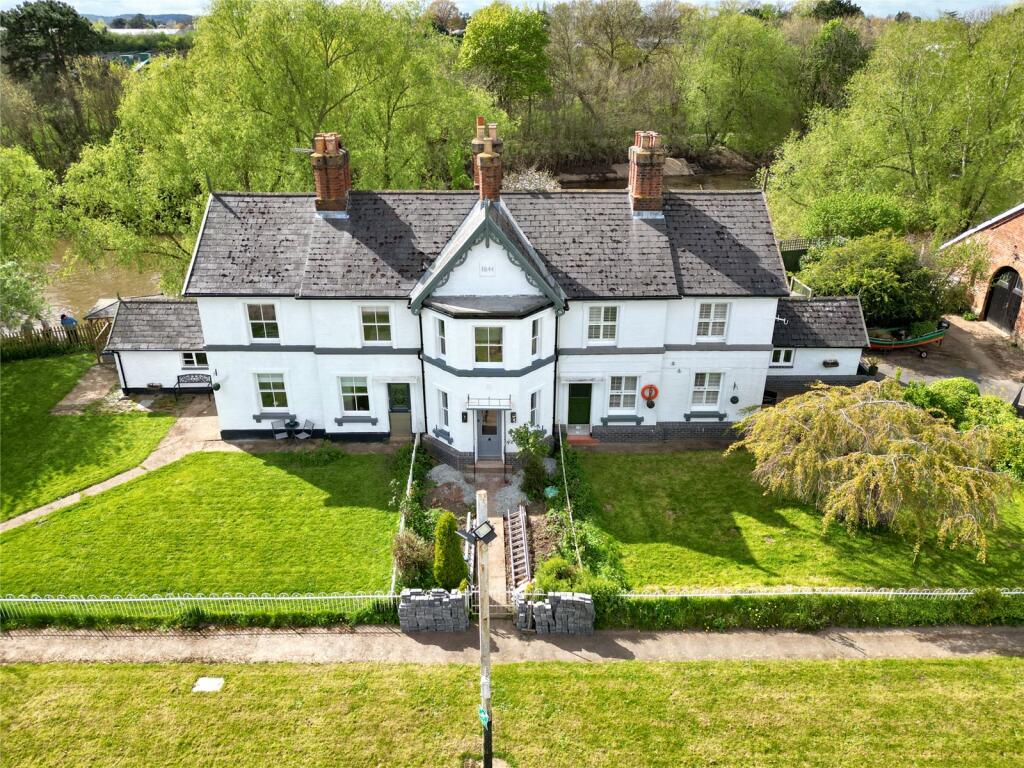Flood Risk
Are you thinking of buying a house by a waterway? Here's some information about flood risk as it affects rivers and canals.

I just wanted to mention, in case any of you are thinking of buying a riverside house, that I am very cautious about including navigable rivers in my lists. This weekend, one of my readers spotted a house which she thought I could add, and I was quick to point out why I hadn't. It's at Diglis Lock - you can Google it yourselves for videos and images of the floods. I honestly don't feel it would be responsible of me to suggest any such properties to my readers, even if the floods were rare... but of course it's possible that they will get ever more frequent with global warming.
When selecting properties for my lists, I always work on the basis of, "Would I want to view or buy this myself?" In this case, the answer was a clear cut "No". Here's the house she suggested, in case you are curious:

What about canals? Don't they flood?
Flood risk is one of the first things you need to check when buying any canalside property. Some canals are canalised navigable rivers and are subject to severe flooding, for example the Trent and Mersey Canal. Other canals are totally man-made channels with carefully managed water levels. Generally these do not flood, but you will find that most of them are fed by natural water courses, and therefore lie near or alongside streams and rivers - and these do present a flood risk.
How to check for flood risk
The key is not to make any assumptions, either positive or negative. You should check the flood risk of an area by entering the postcode in the Government’s Long Term Flood Risk interactive map. This database includes both surface water (this usually comes from flash flooding during heavy rain), and flood risk from rising river and sea levels. Make sure that you check both types.
Breaches
Thankfully breaches in the structure of a canal are rare. They usually happen where the canal has been raised above the surrounding ground level by building large embankments. They are often caused by abnormal weather conditions, such as storms. Some are caused by overtopping - that's when flooding causes the water level in the canal to rise above the top of the embankment. Other breaches are caused by erosion, where the embankment is gradually weakened until eventually it fails. The bank can be eroded by external factors such as gradual landslides, or by internal factors - below water level. Think about that next time you rev your engine to push your stern away from a canal bank!
I'm not sure what the current likelihood of a breach is, but in 2015, Richard Dun, Principal Hydraulic Engineer of the Canal and River Trust, said that they typically experience one or two breaches a year across the entire country. You can see that the chance of this happening by one particular house would be very slight, and the risk, such as it is, can be covered by insurance.
When breaches do occur, it is usually possible to close off a section of canal with locks or stop gates to contain the affected area before any severe damage is done to surrounding properties. After some recent high profile breaches, the CRT has implemented a number of measures to reduce the risk of them occuring again in the future, and they will continue to make improvements where necessary as funds and technology permit.
Hope that helps!
